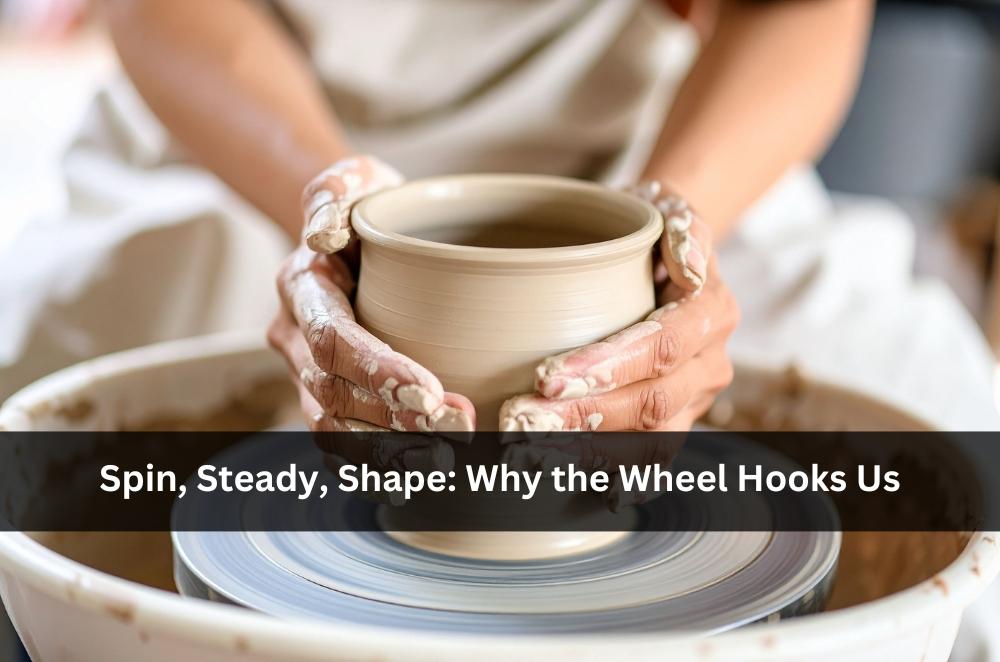Spin, Steady, Shape: Why the Wheel Hooks Us

Wheel-thrown clay slows time and steadies nerves. Hands settle, the wheel hums, and a lump of stoneware starts listening back. Around Melbourne, plenty of us are chasing a calm, tactile skill that still leaves room for surprise. A pottery wheel class Melbourne offers gives newcomers a safe first spin and improvers a sharper eye for centring, pulls, and clean rims. We favour small groups, practical demos, and feedback that lands when it’s needed most—no noisy gimmicks; just repetition done well, from wedging to trimming. You’ll take home proper forms—and a steadier weekly rhythm. More importantly, you’ll leave with a habit you can build on, week by week, pot by pot.
What makes the wheel so engrossing?
Because feedback is instant and progress feels tangible. Clay answers every nudge, so minor improvements stack up quickly.
That sensation of flow arrives early: a centred puck, a clean pull, a rim that holds. We emphasise posture before pressure—feet planted, elbows anchored, wrists stacked—so touch translates straight into the form: fewer tools, more fingertips. Early sessions target cylinders because they teach wall evenness, shoulder control, and base thickness without flashy detours. We keep the pace humane: throw three, keep one, reflect, repeat. The kiln becomes the honest critic; warps, s-cracks, and glaze pinholes point to what changed in your hands. When fundamentals start to take hold, wheel-throwing basics keep the core steps at the forefront without clutter.
• Stack wrists; keep elbows braced
• Pull fewer times with purpose
• Sponge lightly; water hides wobble
• Trim later; throw a shade thicker
How can beginners build skill fast?
Work a simple routine and track it. Consistency beats heroics; cylinders come first, then the bowling, then everything else.
We start with manageable clay weights and repeatable timings—two pulls, a settle, then shape. Height comes after control. Ribs arrive once fingers know what they’re feeling. Weighing clay helps normalise expectations; suddenly, forms look like cousins rather than strangers. We also treat mistakes as data: where did you collapse, and what changed just before it? Keep notes on moisture, clay body, and even wheel speed. Over a few sessions, the log tells a story of steadier hands and fewer rescues.
• Throw in sets; compare like-with-like
• Weigh lumps to build muscle memory
• Leave throwing lines as teaching marks
• Databases to trace your progress
Which outcomes matter beyond finished pots?
Calm, community, and a sturdier sense of time. The wheel offers a weekly circuit-breaker that still produces something useful.
There’s a tactile honesty to it—the cool slip, the hum, the wire’s clean whisper under a base. Sessions stay short enough for weeknights, with glazing folded in when pieces are ready, not rushed. You’ll notice patience turning up elsewhere: steadier commutes, kinder meetings, less doom scroll. That’s the quiet upside—we finish with bowls and cups, sure, but also a habit that clears mental space. You’ll also pick up a material conscience: reclaiming trimmings, minding water, and firing intentionally. And suppose you’re curious about the broader context of craft culture today. In that case, the movement is charted neatly in the handmade ceramics trend today, from its roots to the small-studio momentum we’re living through.
Conclusion
Progress on the wheel rarely comes from hacks. It’s repetition with attention: wedge well, centre fully, pull cleanly, stop early, and let drying and firing do their part. We bring structure and steady coaching; you bring curiosity and time. Keep goals small—a stronger rim today, a truer cylinder next week—and the rest accrues without fanfare. If you’re weighing where this practice sits in the market right now, the handmade ceramics trend today captures the demand drivers and cultural pull shaping today’s makers, while you build your own rhythm session by session.







